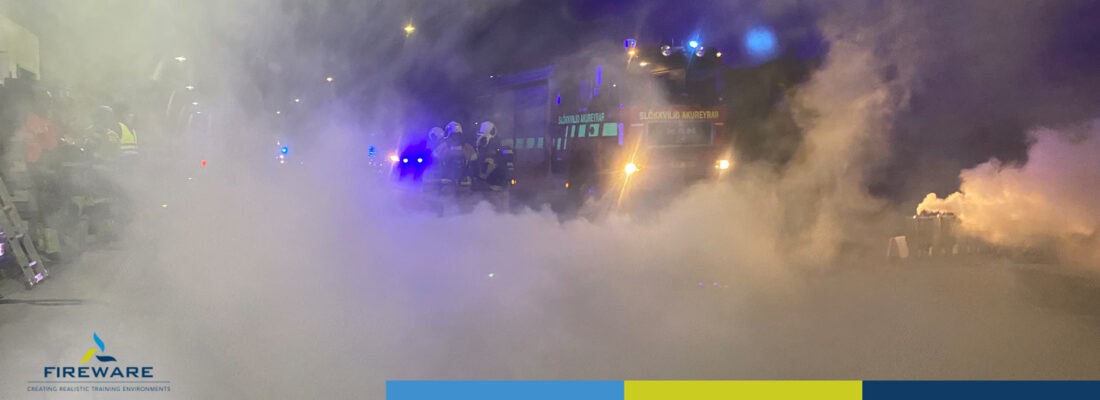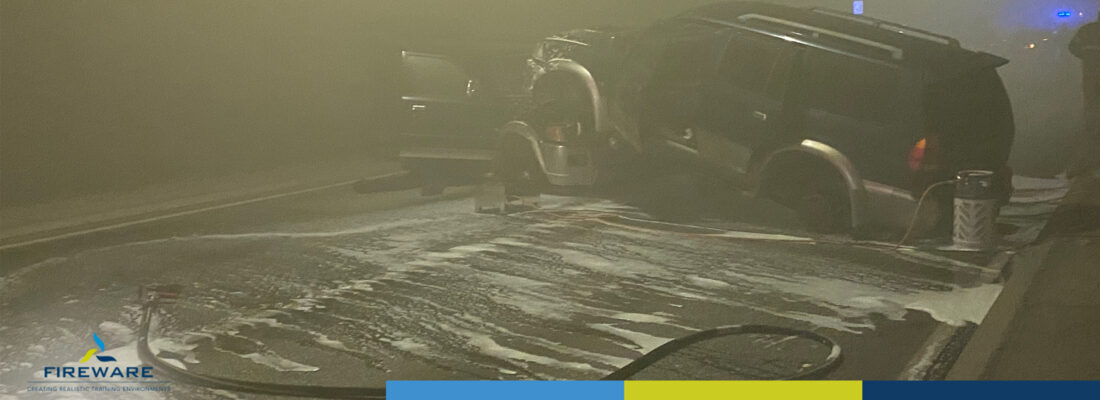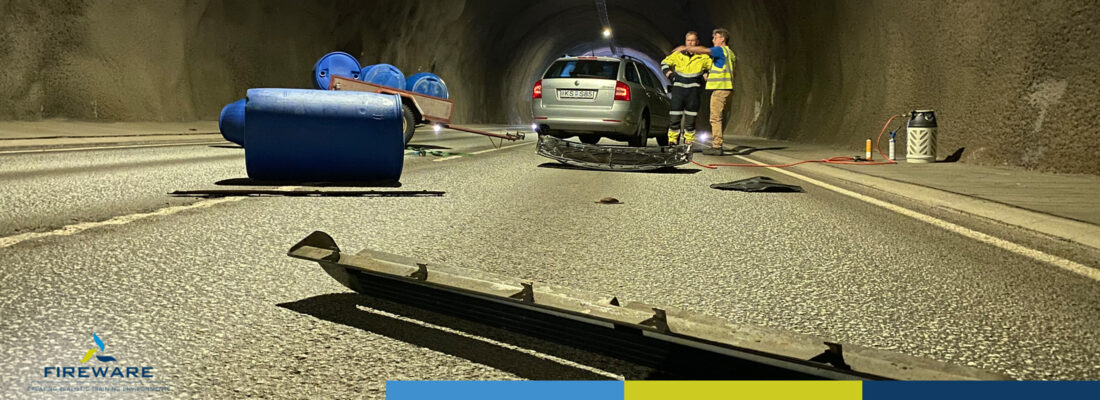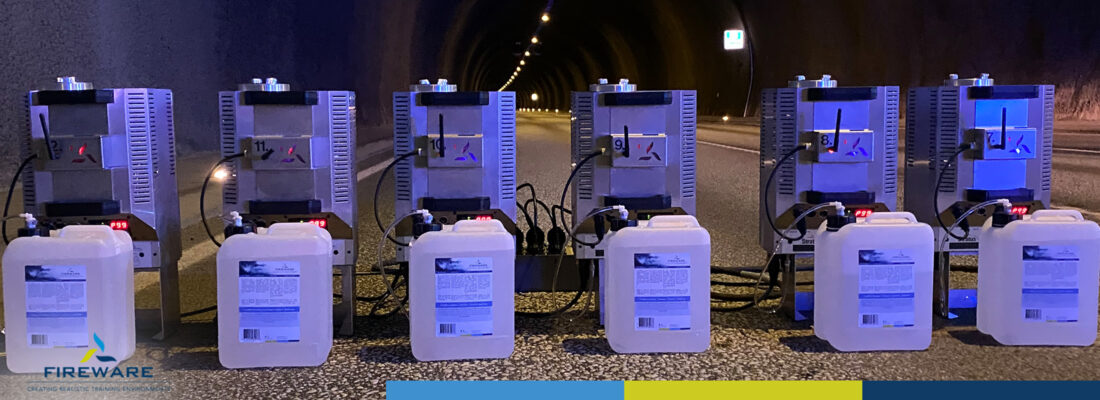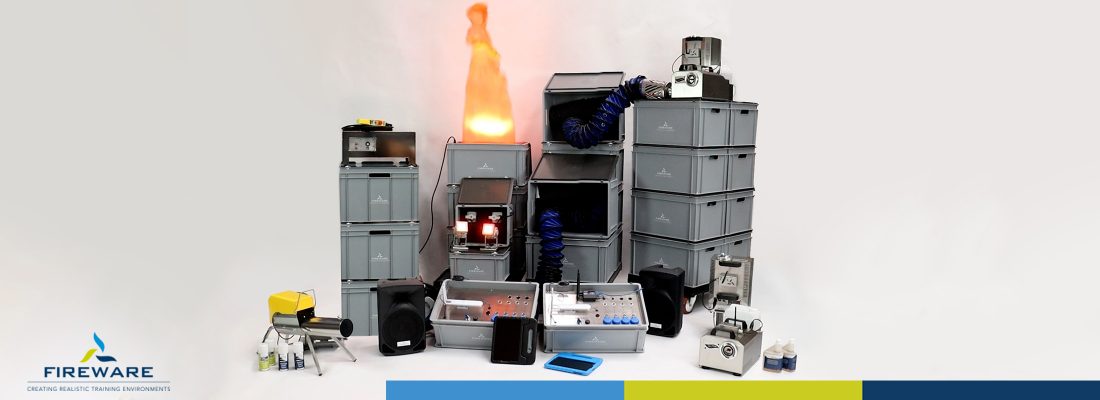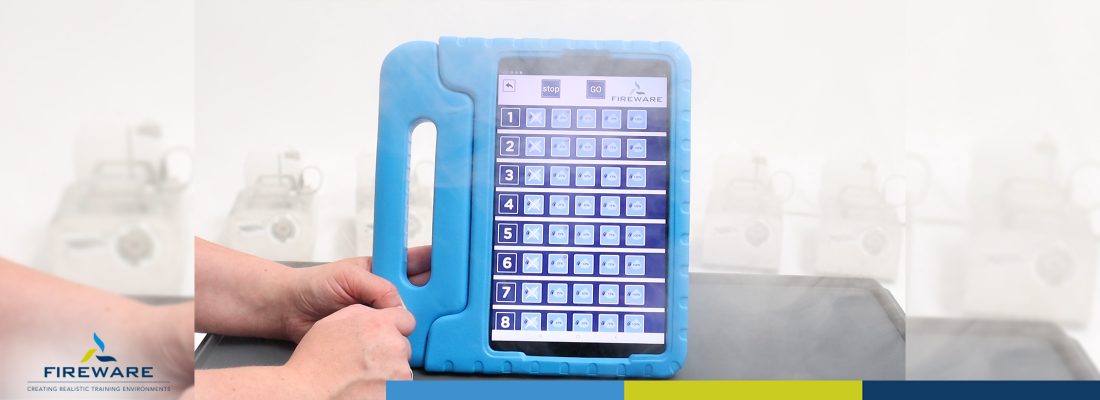In cooperation with our Icelandic distributor Landstjarnan, a unique tunnel fire training set was delivered to the Icelandic Road and Coastal Authority (Vegagerdin) at the end of 2021. A team of the Akureyri fire department (Slokkvilid) was specially trained by FireWare in September 2022 to be able to conduct tunnel exercises anywhere in Iceland using this set. Part of this training included a large-scale exercise in the Vaðlaheiði tunnel.
The tunnel
The 7.2-kilometre-long Vaðlaheiði tunnel connects the town of Akureyri with the route to Husavik. The tunnel shortens the route on the national ring road by 16 kilometres. That may not seem like much, but it is 16 kilometres that is especially difficult to pass during winter.
Tunnels are often cold and damp. The Vaðlaheiði tunnel is an exception. During construction, the builders came across a hot spring. The warm water of over 46 degrees flows along the tunnel tube at 12 bar. This creates a temperature inside the tunnel of around 29 degrees. The hot water flowing out of the tunnel is collected and used for several purposes, including a wellness centre nearby.
The tunnel has only one tunnel tube, for both directions of travel. As an escape facility, there are several escape chambers that can be closed off from the tunnel by a lock. The standard temperature in these chambers is over 40 degrees. If the escape chambers are used, a water cooling system can be switched on to lower the temperature to around 25 degrees.
Besides the escape chambers, there are several coves in the tunnel tube where (maintenance) vehicles can be stored temporarily. Ideal for exercises, as cars, wrecks and forklifts to build up the scenario can easily be placed near the exercise site in advance!
The intended learning and teaching objectives
In addition to the legal obligation to conduct an exercise in the tunnels, the Icelandic Road and Coastal Authority, the Vegagerdin and the Akureyri Fire Service choose to take an even better approach. Four additional learning objectives have been defined that are specifically practised:
- Driving in smoke with the Rapid Intervention Vehicles ( RIVs);
- Using the thermal imaging cameras on the front the vehicles;
- Deploying OneSeven as an fire extinguishing agent and considering whether to do so with the bumper monitor or with a hose from the vehicle;
- Getting in and out of the vehicle with breathing air and thereby connecting and disconnecting the central breathing air supply.
The staging and scenarios are therefore designed and set up to meet these additional objectives.
Choices in scenario and staging
The scenario involved a head-on collision between two vehicles about halfway through the tunnel. These vehicles caught fire. At about 100 metres from the incident, this caused emergency stops of rear-coming traffic, including vehicles equipped with trailers. These trailers sheared and caused falling cargo. Two secondary fires on either side of the main incident completed the scenario. This created an incident area of about 350 metres.
During an incident, the RIVs enter the tunnel from both sides. Due to the switching on of the tunnel ventilation, one of the RIVs will drive through the column of smoke and the other will not. This was not a desirable starting situation for this exercise while the crews of both RIVs had to be trained in driving through smoke. That is why the decision was made to place the smoke machines 200 metres outside the incident area so that this learning and teaching objective could also be practised.
The secondary fires could either be fought with the bumper monitor or with a hose. Each method with its own advantages and disadvantages. It was also necessary to get out of the vehicle in order to clear the way to continue driving to the primary incident. Whether or not by first getting back in and driving on. In short, plenty of considerations and dilemmas for a good debriefing!
Deployed staging materials
The starting point was to create a realistic amount of smoke. Therefore, the choice was made to use 12 Stratus smoke generators with a Wi-Fi module. These were controlled with a tablet through an Incident Server. The smoke fluid used was FireWare Outdoor. Around 24,000m3/min of smoke could be produced with this combination.
The use of three Vesta fire extinguisher trainers was chosen for the primary seat of fire. The two secondary seats of fire, were performed with a Hybrid fire extinguisher trainer. Fire accents were added with low smoke flammable gel. To simulate bursting tyres, an explosion simulator was chosen. The two casualties were simulated with an RL50 manikin.
Time-frame
The tunnel was closed to traffic at 10:00 in the morning. At 11:00, the first exercise started. By preparing the exercise and staging well, a build-up time of one hour was feasible. The deployment exercise was run three times in a row. At 14:30, the end of exercise signal was given for the last run. In a record time of 23 minutes, the entire staging was dismantled, allowing the tunnel to reopen to traffic at 15:00.
Observation
Cameras were placed at several strategic spots. With a livestream, observers from the various disciplines (including fire brigade, police, ambulance, tunnel operator and the press) could closely follow the exercise. Part of the observation took place at the exercise site itself. Another part from the fire station remotely.
Create your own challenging tunnel exercise?
FireWare's simulation team has extensive experience in tunnel staging. Working with large amounts of practice smoke, tunnel ventilation systems and very tight deadlines are no stranger to us. Contact us for more information! Let’s create your perfect exercise together!

